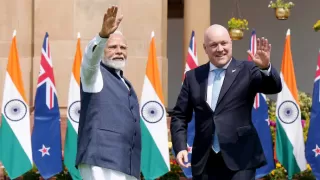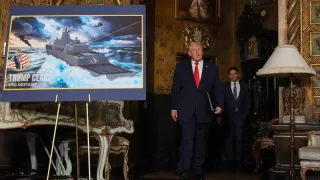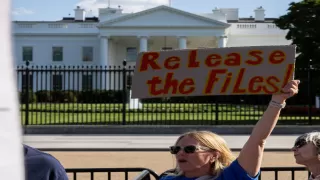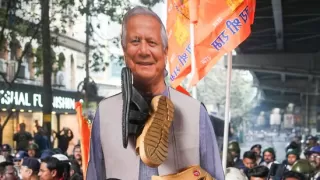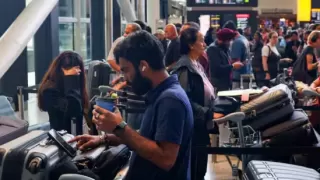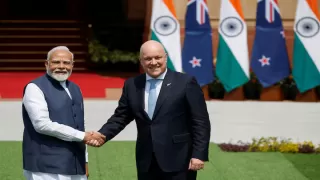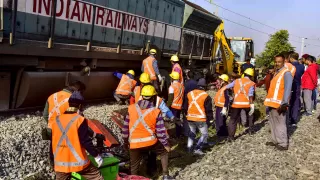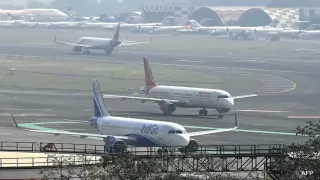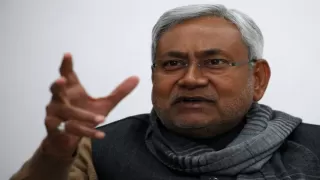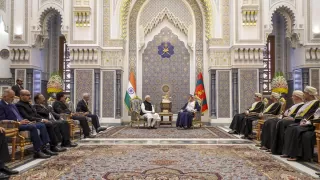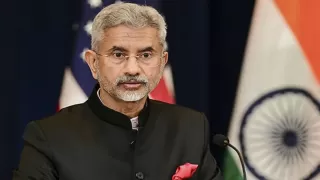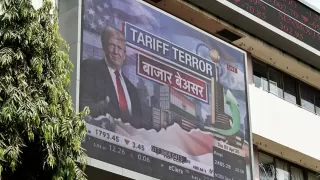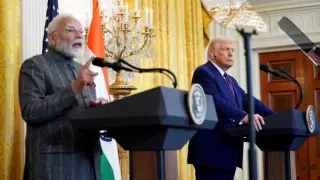India has extended an invitation to Canadian Prime Minister Mark Carney to visit New Delhi for talks with Prime Minister Narendra Modi — an outreach that signals a renewed push to deepen economic ties and restore trust between the two countries. Officials describe the move as an opportunity to move beyond past diplomatic friction and explore a wide-ranging partnership in trade, investment and technology.
Both capitals appear intent on translating rapprochement into concrete outcomes. With bilateral trade already on the rise, diplomats and analysts say a comprehensive trade or economic partnership could meaningfully increase annual trade volumes — potentially moving toward the long-discussed US$50 billion mark if market access, regulatory and investment issues are resolved.
The invitation is being tied to high-profile multilateral engagements, including an Artificial Intelligence Action Summit hosted in New Delhi. That summit could provide a convenient platform for discussions on advanced-technology cooperation alongside traditional trade and investment topics.
Invitation and agenda for the visit
India’s new High Commissioner to Canada confirmed that Prime Minister Modi would set aside time for bilateral discussions should Mark Carney accept the invitation. Officials indicated there is scheduling flexibility and a desire to hold talks before key domestic and international calendars tighten in the months ahead. The agenda under discussion would likely include trade liberalisation, investment protection, technology partnerships and cooperation on critical minerals and energy.
Observers expect talks to cover both headline-level political issues and granular economic matters: tariff and non-tariff barriers, supply-chain linkages, standards and certifications, as well as opportunities for joint ventures in sectors such as battery storage, nuclear energy and green technologies. The AI summit invitation also signals an intention to elevate cooperation on digital economy issues, data governance and research collaboration.
Diplomatic context: strain and reset
The outreach comes after a period of strained relations between India and Canada following serious allegations that led to a freeze in high-level engagement. In recent months both governments have worked to reset the relationship: diplomatic channels have been re-established, high commissioners restored, and leaders have met on the margins of multilateral summits to reaffirm contact.
Officials on both sides have emphasised a forward-looking approach while acknowledging that trust must be rebuilt. Reopening trade and investment dialogue is being presented as a pragmatic, mutual-interest path toward stabilising and then strengthening bilateral relations.
Trade potential and economic stakes
Bilateral trade has shown robust growth in recent years, and officials say the current momentum could be amplified with a formal trade framework. India recorded a substantial increase in two-way trade year-on-year, and diplomats suggest that a renewed trade push could realistically double recent figures under the right policy settings.
Priority sectors identified for intensified cooperation include oil and gas, fertilisers, processed food and agricultural products, battery and energy-storage technologies, critical minerals, and advanced technologies such as AI and quantum computing. Each sector presents distinct opportunities: energy and minerals for strategic resource security; agriculture and food processing for market access and supply diversification; and tech for high-value services and R&D partnerships.
Strategic sectors and negotiation hurdles
Canada’s agricultural exports — notably canola — have been highlighted as products with significant potential in India’s large cooking-oil market, but trade experts note cultural preferences and established consumer habits will require marketing and regulatory alignment. Similarly, cooperation on critical minerals and energy would demand robust investment protections, environmental safeguards, and clear recognition of Indigenous rights and titles in Canada.
India has also signalled interest in investing in Canadian projects if Ottawa can provide predictable rules and clear environmental and social frameworks. Officials have warned that India’s interest is pragmatic and time-sensitive: if Canada delays or imposes excessive conditions, India will seek alternative suppliers and partners.
Challenges ahead: trust, timing and infrastructure
Several political and structural challenges remain. The legacy of the diplomatic row means both governments must manage domestic constituencies and sensitive security questions while trying to move the relationship forward. Canada’s large diaspora communities and India’s domestic political considerations mean that any high-level engagement will be closely watched and politically consequential.
On the practical side, converting high-level commitments into realised trade growth will require improvements in trade facilitation, logistics, customs cooperation and alignment of standards. Labour, environmental and origin rules must be negotiated carefully to avoid disputes that could derail progress.
Negotiation dynamics and likely timelines
If Mark Carney accepts the invitation and visits New Delhi, officials say work-level teams would likely be tasked to begin immediate technical consultations. These could aim to restart elements of the previously paused negotiations and explore an “early harvest” set of outcomes that deliver quick wins while broader, more complex issues are worked through.
Timing will be crucial: India has signalled a preference for talks before the hotter months of the Indian political calendar, while Canada will weigh its own domestic timetable and strategic priorities. A phased approach — quick agreements on lower-complexity items paired with longer-term talks on investment and services — appears to be the most pragmatic path forward.
What each side stands to gain
For India, closer ties with Canada promise access to resources, technology, and markets that can support its industrial and energy transition goals. For Canada, India represents a vast and growing market for exports, an investment destination for resource and clean-energy projects, and an important partner in diversifying trade away from a reliance on a handful of large markets.
Experts highlight that beyond raw trade numbers, stronger India-Canada engagement could foster cooperation in research and innovation, align climate and sustainability goals, and support joint supply-chain resilience in critical sectors.
Risks and mitigation
Key risks include a resurgence of political tensions, delays caused by domestic opposition on either side, and technical disagreements over standards, investor protections and recognition of Indigenous rights. To mitigate these risks, officials suggest establishing transparent, institutionalised dialogue mechanisms, regular ministerial-level reviews, and joint working groups to handle sensitive topics separately from commercial negotiations.
Trust-building measures — such as confidence-building visits, legal-technical exchanges, and targeted sectoral pilot projects — could help create momentum and provide tangible benefits to stakeholders while bigger problems are negotiated.
Conclusion: a cautious optimism
The invitation extended to Prime Minister Mark Carney is being framed in diplomatic circles as an opening gambit: pragmatic, strategically timed, and focused on delivering economic outcomes. If the visit occurs and is followed by sustained, technical-level engagement, India and Canada could transform a fragile thaw into a durable, interest-driven partnership.
Turning aspiration into results will depend on political will, the speed of technical negotiations, and both sides’ willingness to put in place the legal and regulatory frameworks needed to support long-term, sustainable trade and investment growth.
With both governments signalling intent, the next few months will be crucial: acceptance of the invitation, the scope of discussions in New Delhi, and the immediate decisions taken to create an environment for expanded bilateral commerce will determine whether the US$50-billion trade target remains an ambition or becomes an achievable goal.
Also Read: Who Is Sam Pepper? Influencer Banned After India Incident





